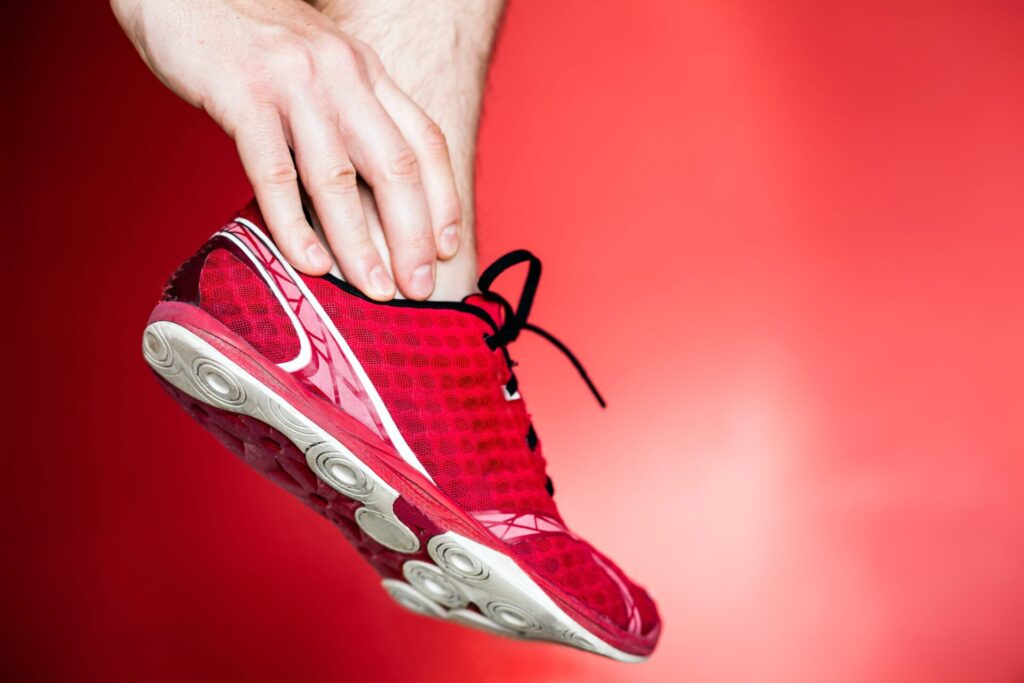How to Overcome Stubborn Ankle Injuries
It’s Sunny and just maybe we have if you will taken too much advantage without even realising it until it’s too late. We now have already over exerted a historic stubborn ankle injury . What now? Maybe we are (re-)experiencing the classic ‘rolled ankle’? It’s one of the most common injuries we see at clinic and yet it is also one of the most common injuries we do not see at clinic. For example clients attending for another issue perhaps a painful nail condition and a client may inadvertently say something such as: ‘oh by the way I sprained my ankle a little while ago but it was nothing really and I could walk on it the next day’,..
An ankle injury can be frustrating and even more challenging to manage correctly. With the swelling, (an automatic protective response of the body to splint an area of injury), it can be difficult even impossible to walk and pain with weight bearing can present in quite impactful negative ways affecting our daily living activities. Not only are we now benched from our daily routines for several weeks at least (*with a mild ankle injury), however, we could be looking at months until we are back to our ‘normal’ selves again.
Ankle injuries are often thought of as ‘sports injuries‘. But you don’t have to be an athlete or even a ‘weekend warrior’ to turn your ankle and hurt it. Even something as simple as walking on an uneven surface can cause painful, debilitating sprains/ fractures.
Ankle injuries can involve various structures around the ankle and foot and the specific structures affected often depend on the nature and severity of the injury. Some structures associated with ankle injuries include the bony anatomy, tendons, nerves, the sinus tarsi, tarsal tunnel, muscles and ligaments.
Stubborn ankle injuries could result to:
- Sinus tarsi injury
- Tibialis posterior
- tarsal tunnel syndrome
- Arthritis
- Nerve Damage
The most common cause of a sinus tarsi injury is an ankle sprain, particularly when the foot rolls inward (inversion) during the injury. This can lead to stretching or tearing of the ligaments and damage to the structures within the sinus tarsi.
On the other hand, tibialis posterior is an inflammation or irritation of the tibialis posterior tendon that occurs due to overuse or injury on the inner aspect leading to pain and discomfort.
A ‘tarsal tunnel syndrome’ is where injuries to the ankle, such as sprains or fractures, can cause swelling and compression of the tibial nerve. The tarsal tunnel counterpart is the carpal tunnel but affecting foot and ankle instead of the wrist.
Moreover, ankle injuries can vary in severity, from mild sprains to fractures as well as more complex mechanisms of injury and involving multiple structures. The diagnosis and treatment of ankle injuries depend on the specific structures involved and the extent of the injury.
Did you know that when an ankle inversion injury is not well managed the first time around it can lead to a chronic recurrent inversion injury which can become a life long disability.
Fun fact: Dogs sweat through their foot pads to help keep them cool. They also keep cool by panting.
Are you suffering from any nail condition? At The Chelsea Clinic, we can help. One of our podiatrist can assist and then recommend what treatments are best to get you back on track. Podiatrist South Kensington
Schedule an appointment here or you may call us at +44 (0) 207 101 4000.
We hope you have a feetastic day!
-The Chelsea Clinic and Team




